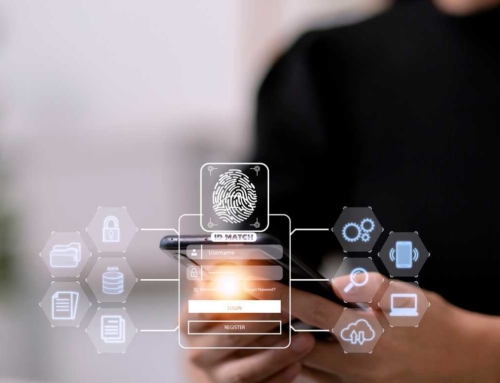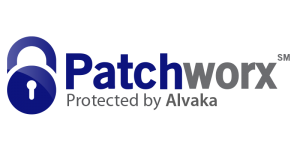Evaluating Disaster Recovery as a Service for Ransomware
Understanding Ransomware and Its Impact on Business Continuity
Ransomware is a type of malicious software that encrypts an organization’s files and demands payment in exchange for the decryption key. The consequences of such an attack can be severe, often bringing essential operations to a standstill and leading to significant financial and reputational loss. In an era where data is a crucial asset, the ability to recover swiftly from such an incident is not a luxury—it’s a necessity. We recognize that a robust disaster recovery plan is a cornerstone of business resilience, empowering organizations to restore their data integrity and operational capabilities with minimal downtime.
Why Disaster Recovery as a Service (DRaaS) is Crucial in the Ransomware Era
With the ever-increasing threat of ransomware, it’s vital for organizations to employ systems and services that ensure uninterrupted operations. Disaster Recovery as a Service (DRaaS) emerges as an unmatched solution, providing swift and reliable data and system recovery in the event of a ransomware attack. DRaaS allows us to ensure business continuity by maintaining copies of critical data in secure, off-site locations. This proactive approach is integral to mitigating the risks associated with data breaches and cyberattacks and solidifies our commitment to maintaining business operations under adverse conditions.
Selecting the Right DRaaS Solution to Combat Ransomware Threats
When evaluating different DRaaS offerings, we are mindful of the multitude of factors that can determine the effectiveness of a solution against ransomware. These factors include, but are not limited to, the security measures implemented, the speed of data recovery, and the provider’s track record of reliability. As dedication to our clients’ operational integrity is a guiding principle for us, we focus on leveraging DRaaS solutions that align with the specific needs and risk profiles of the businesses we serve. This means selecting a DRaaS provider that can deliver robust protection and quick recovery times in the face of ransomware’s disruptive potential.
Testing and Verification: Ensuring DRaaS Effectiveness Against Ransomware
Simulating Attacks to Validate Defenses
We recognize that the best defense against ransomware is being prepared before an attack happens. It’s why we focus so intently on rigorous testing and verification of our Disaster Recovery as a Service (DRaaS) solutions. We simulate ransomware attacks to validate that our defense mechanisms are effective and to ensure that our clients’ data can be reliably recovered under any circumstances. By replicating an actual attack scenario, we can verify the resilience of our system and provide our clients with confidence in our DRaaS solution.
Regularly Scheduled Testing for Continual Assurance
In the era of constant cyber threats, sporadic testing isn’t enough. We schedule regular testing of our DRaaS solution to provide continual assurance to our clients. Consistent and thorough testing helps us spot potential vulnerabilities and allows us to improve our defenses proactively. Regular DRaaS testing means we can guarantee that recovery processes are not just theoretically effective but practically sound under real-world conditions.
Real-Time Monitoring for Quick Response
Our commitment to our clients’ data safety means we don’t just wait for scheduled testing intervals. Real-time monitoring is a cornerstone of our DRaaS solution, ensuring that any anomaly, no matter how small, is detected quickly. A swift response reduces the risk of data loss and limits downtime, which is critical in maintaining business continuity in the face of a ransomware incident. Our vigilant monitoring system is designed to spot the signs of ransomware early, triggering rapid defensive actions.
Reporting and Documentation for Transparency and Compliance
We believe transparency is crucial in disaster recovery services. Hence, we provide detailed reporting and documentation post-recovery testing. This not only helps our clients understand their systems’ resilience levels but also ensures they meet compliance requirements. Following a ransomware simulation or any test of our DRaaS, we provide a comprehensive report outlining the performance of the recovery process, areas for improvement, and steps taken to address any issues.
- Simulate various ransomware attack scenarios
- Analyze the recovery process for any weaknesses
- Implement improvements based on test outcomes
- Provide comprehensive reports and documentation
- Ensure adherence to compliance standards and regulations
- Maintain an ongoing schedule of rigorous testing
Cultural Adoption and the Human Element
While our DRaaS platform offers technological robustness, we also emphasize the human element. Employees must be on board with regular disaster recovery testing, understanding their roles in the process. We help our clients nurture a culture of preparedness, ensuring staff are well-trained to respond effectively when a ransomware attack is detected. Through this cultural adoption, we strengthen the overall resilience of the organizations we serve.
Customizing Tests to Match Client Needs
Every organization’s infrastructure is unique, and so are the challenges they may face from ransomware. We tailor our testing and verification procedures to match each client’s specific needs, ensuring the DRaaS solution is finely tuned to their environment. Whether it’s a small business or a large enterprise, we design our testing protocols to align with their operational demands and risk profiles, offering a truly customized disaster recovery service.
Did you know? DRaaS solutions can significantly reduce downtime after a ransomware attack by offering recovery time objectives (RTOs) that ensure rapid restoration of business functions.
Establishing Business Continuity in the Face of Ransomware with Disaster Recovery as a Service (DRaaS)
In this ever-evolving digital landscape, the threat of ransomware looms large over businesses of every size. As we’ve discussed, ransomware can disrupt operations, incur financial losses, and damage your organization’s reputation. Preparedness is no longer an option but a necessity. It is here that Alvaka offers a robust solution with our Alvaka DRworx, a targeted Disaster Recovery as a Service (DRaaS) designed to protect, recover, and maintain business continuity even in the face of dire cyber threats.
Final Words on Disaster Recovery and Readiness
Confronting the ransomware menace requires a forward-thinking approach to IT management. Our expertise in implementing DRaaS provides a secure pathway to recovery, ensuring that critical data and applications remain accessible after an attack. By employing cutting-edge technology and adhering to best practices, we tailor our DRaaS solutions to meet the unique needs of your business, ensuring minimal downtime and optimal recovery performance.
A critical part of our commitment is fostering a culture of resilience within organizations. Regular testing and verification underpin the reliability of our DRaaS offerings. We understand that recovery is not a one-time event but a continuous process of improvement and adaptation. Our team stands ready to guide your business through the complex landscape of disaster recovery, ensuring you are prepared to meet any challenge head-on.
Secure Your Operations with Alvaka
Disaster Recovery as a Service (DRaaS) is a crucial component in the toolkit of any business seeking to thrive amidst the uncertainties posed by ransomware. By partnering with Alvaka, you gain access to an unrivaled depth of expertise and innovation in DRaaS solutions. Our comprehensive approach means we don’t just restore your systems; we focus on the resilience and agility of your entire operation. We’re not just providers; we’re partners in ensuring that your business emerges stronger and more secure from any disruption, ready to continue serving your clients without missing a beat.
FAQ
What is ransomware, and how does it affect business operations? ▼
Ransomware is malicious software that encrypts an organization’s data, effectively holding it hostage until a ransom is paid. This cyber threat can cripple business operations by preventing access to critical information and systems, resulting in downtime and potential loss of business. Our understanding of the risks highlights the importance of implementing strong security measures and disaster recovery plans to ensure business continuity.
Why is having a disaster recovery plan essential for dealing with ransomware? ▼
A robust disaster recovery plan is crucial because it prepares organizations to respond effectively to ransomware attacks. By having a plan in place, we enable a swift restoration of operations, minimizing downtime and limiting the economic impact. Furthermore, it demonstrates our commitment to maintaining business resilience and protecting our clients’ interests in the face of such threats.
How does Disaster Recovery as a Service (DRaaS) contribute to ransomware mitigation? ▼
Disaster Recovery as a Service (DRaaS) plays a pivotal role in ransomware mitigation by providing rapid recovery of data and systems through a cloud-based service. It ensures that our business operations can continue despite a ransomware attack, with minimal disruption. DRaaS is a crucial component of business resilience, enabling us to maintain our services and safeguard our reputation in an era where cyber threats are rampant.
What factors should be considered when selecting a DRaaS solution to combat ransomware? ▼
When selecting a DRaaS solution to combat ransomware, it’s important to consider factors such as recovery time objectives (RTOs), recovery point objectives (RPOs), ease of implementation, scalability, compliance with industry regulations, and the provider’s experience and reliability. Evaluating these elements helps ensure we choose a solution that aligns with our specific needs and enhances our defensive strategy against ransomware.
What are recovery time objectives (RTOs) and why are they important for DRaaS? ▼
Recovery Time Objectives (RTOs) refer to the targeted duration of time within which business processes must be restored after a disaster to avoid unacceptable consequences. RTOs are critical for DRaaS as they define how quickly we need to get systems up and running after a ransomware attack, ensuring that our operations resume promptly and the impact on our business is minimized.
What are recovery point objectives (RPOs), and how do they relate to data loss prevention? ▼
Recovery Point Objectives (RPOs) define the maximum tolerable period in which data might be lost due to an incident. RPOs are essential for data loss prevention in the context of DRaaS because they determine the frequency of backups. By setting appropriate RPOs, we can ensure that, even in the event of a ransomware attack, data loss is kept to a minimum, preserving our crucial assets and client trust.
How often should we test our DRaaS solution to ensure it’s effective against ransomware? ▼
We should test our DRaaS solution regularly—ideally, quarterly or biannually—to validate its effectiveness against ransomware. Consistent testing allows us to identify and remedy any vulnerabilities, ensuring that the solution will perform as expected in the event of an actual attack. This proactive approach is a vital part of maintaining an effective defense against evolving ransomware threats.
Can DRaaS help in preventing ransomware attacks, or is it only for recovery? ▼
While the primary function of DRaaS is to enable rapid recovery from incidents such as ransomware attacks, it can also play a preventative role. By leveraging DRaaS, we implement strong protective measures such as frequent backups and replication, which can deter attackers and reduce the risk of severe damage. Therefore, DRaaS can be a key component of both our prevention and recovery strategies.
What is the role of DRaaS in achieving business resilience? ▼
DRaaS is integral to achieving business resilience, as it ensures that operations can be quickly restored with minimal downtime in the face of disruptions such as ransomware. Additionally, DRaaS provides scalability and flexibility, allowing us to adapt to changing needs and threats. Consequently, DRaaS serves as an essential pillar in our overall strategy to remain robust and dependable regardless of the challenges we encounter.
How do we ensure compliance with industry regulations when using DRaaS in our ransomware defense strategy?▼
To ensure compliance with industry regulations when using Disaster Recovery as a Service (DRaaS) in a ransomware defense strategy, we can take the following steps:
- Understand Applicable Regulations: Identify the specific industry regulations relevant to the organization, such as GDPR, HIPAA, PCI DSS, or SOX. This ensures that the DRaaS provider aligns with data handling, storage, and security requirements.
- Choose a Compliant DRaaS Provider: Select a DRaaS vendor with certifications or compliance attestations that match regulatory standards. For example, ensure the provider offers encryption, data localization, and access controls to meet regulations like HIPAA or GDPR.
- Implement Secure Data Backup Protocols: Regularly back up data in accordance with compliance requirements, ensuring that backups are encrypted both in transit and at rest. DRaaS solutions must also offer immutable backups, preventing unauthorized modifications.
- Regularly Audit DRaaS Policies and Processes: Conduct periodic reviews and audits of the DRaaS environment to verify compliance with industry standards. Ensure proper logging, reporting, and retention of backup data to meet audit requirements.
- Customize Disaster Recovery Plans: Tailor DR plans to align with regulatory requirements, including Recovery Time Objectives (RTO) and Recovery Point Objectives (RPO). This ensures minimal disruption to critical services during a ransomware attack.
- Secure Access Controls: Implement robust identity and access management (IAM) protocols to control who can access backup data. Multi-factor authentication (MFA) and role-based access controls further reduce risk.
- Establish Incident Response Protocols: Develop a clear incident response plan in compliance with regulatory requirements, including breach notifications and recovery steps to mitigate the impact of ransomware attacks.
- Train Staff on Compliance: Educate staff on both regulatory requirements and best practices for using DRaaS within a ransomware defense strategy, ensuring alignment across the organization.








 You want to enter in a fully burdened labor rate for this field. What that means is that you want to take the base hourly rate, plus 25-30% for employer payroll taxes, benefits, vacation/holiday time, etc.
You want to enter in a fully burdened labor rate for this field. What that means is that you want to take the base hourly rate, plus 25-30% for employer payroll taxes, benefits, vacation/holiday time, etc.
 Smoke testing is a type of software testing performed by Alvaka after a software patching sequence to ensure that the system is working correctly and to identify any misconfigurations or conflicts within the patched system.
Smoke testing is a type of software testing performed by Alvaka after a software patching sequence to ensure that the system is working correctly and to identify any misconfigurations or conflicts within the patched system. This is a basic cost calculator for you to compute your typical monthly cost for patching your servers, PCs, laptops, tablets and associated application software. It also forms the basis for you to begin calculating your Return on Investment for software patching, or for comparison with alternatives to the manual process of patching operating systems and application software—such as Patch Management as a Service, also known as Vulnerability Management as a Service.
This is a basic cost calculator for you to compute your typical monthly cost for patching your servers, PCs, laptops, tablets and associated application software. It also forms the basis for you to begin calculating your Return on Investment for software patching, or for comparison with alternatives to the manual process of patching operating systems and application software—such as Patch Management as a Service, also known as Vulnerability Management as a Service. Smoke testing is a term used to describe the testing process for servers after patches are applied.
Smoke testing is a term used to describe the testing process for servers after patches are applied.